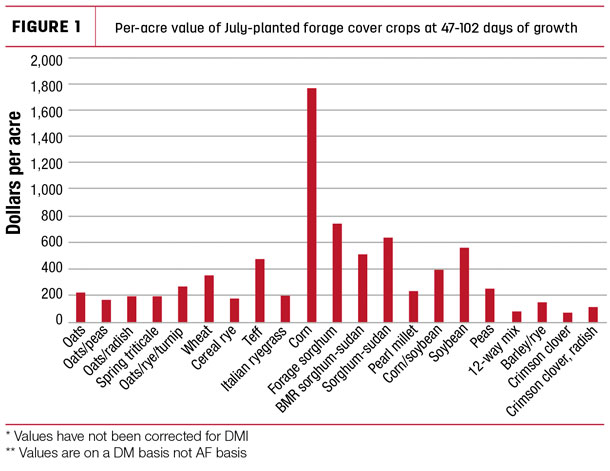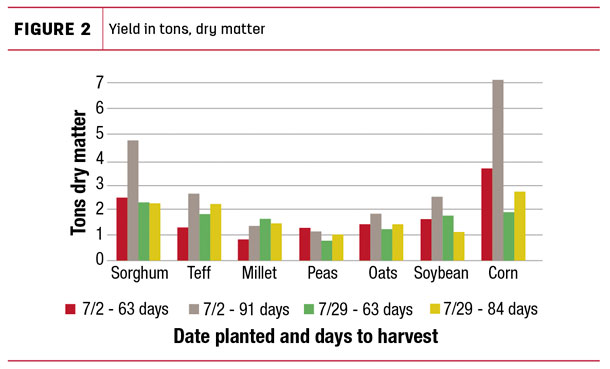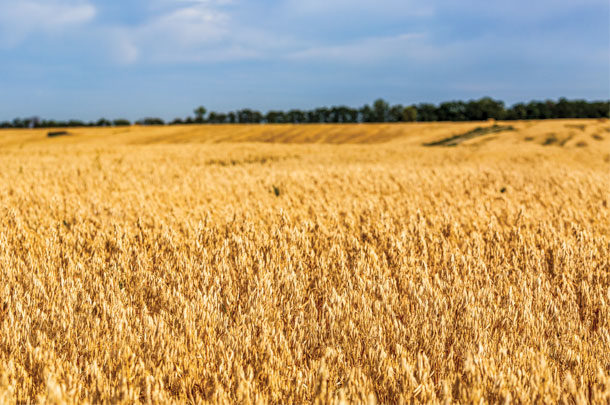Summer annuals in a double-crop system can return more dollars per acre, but not all summer annuals return the same value or yield. Many producers use summer annual forages for grazing and stored forage to either fill the summer slump or keep livestock fed through the winter. The spring of 2019 created many unique challenges with record winter kill in alfalfa and preventative plant acres in northwest Ohio. Many livestock producers in this area were concerned if they would have feed for winter when soils finally dried out enough to plant the last week of June.
Unfortunately, the next dry window in some areas did not come until late July. Luckily, producers were able to use summer annuals to fulfill their forage needs utilizing their own and neighbors’ unplanted acres. It was truly a summer of risk and neighbors coming together to help each other grow forages to sustain livestock in the area. One of the challenges for many producers with these crops was that the hay didn’t dry (to be made as dry hay) but needed to be made as baleage or silage.
Hopefully, as you read this your crops are all planted, but lessons learned in 2019 may need to be utilized again as weather patterns change and spring weather becomes more volatile. Summer annuals can also be planted after wheat in the Midwest and the Southern part of the country. After the positive experience many producers had with summer forage crops, many are considering how to fit them into their operation for continued use.
With the number of prevent-plant acres in 2019, summer annual forage and cover crop seed became tight, causing many people to experiment with crops they had no experience growing. With the variety of forage and cover crops planted, the Ohio State University extension conducted a statewide assessment of yield potential and quality of these crops. Figure 1 shows the many species harvested and the nutrient dollar value per acre of these forage crops.

Alongside the statewide assessment, trials were also conducted at multiple research stations looking at the effects of an early July versus late July planting of various crops.
The nutritional value of these summer annual forages ranged from $200 to $260 per ton. While it may not be possible to sell these forages for their nutritional value, this is what it would cost to replace these forages in the ration with other forms of protein, energy and fiber. Figure 2 shows the tons harvested per acre of forages planted on July 2 and harvested either 63 or 91 days after planting versus a July 29 planting date with a harvest 63 to 84 days after planting.

For producers looking to add value to their operations, the value per acre had a wide range from $100 to $1,800 per acre (Figure 1). While nutrition content of the crop is important to filling the needs of livestock, the driving factor behind return per acre is the tons produced.
While some summer annuals can be harvested multiple times over the summer, we compared a single cutting at about 60 or 90 days after planting. Not surprisingly, across most species, the early July planting had increased yields, but the ability to utilize these crops into a late summer planting was surprising. All crops in Figure 2 were managed the same, being planted with a drill in 7.5-inch rows with 50 pounds of nitrogen applied. Early July planted corn yielded almost 7 tons of dry matter compared to late July planted corn, which only yielded about 2.5 tons.
The reduction in yield was also found in sorghum more than other crops. Sorghum 90-day yield dropped from 4 tons per acre to about 2 tons with the later planting date. Both crops could have been grown until just before the first frost, increasing tonnage. The balancing act between quality and tonnage is found just before these crops switch from vegetative growth to reproductive.
When these crops are planted late in the growing season (end of July), they will not complete grain fill, making it better to harvest them just before seed heads or tassels emerge. Plant starch content will be lower as compared to normal well-eared corn plants, lowering energy values of the silage. This is more complicated than straight cutting corn silage, since the crop will need mowed, windrowed, wilted and then chopped or baled, but it can be done. When corn is planted at high populations and in narrow 7.5- to 10-inch rows, stalks are smaller, allowing it to be mowed and wilted better than wide-row corn.
Three other crops that performed well were teff, soybeans and oats. Teff provided the advantage that it could be made into dry hay much easier than other forages. It proved to have some challenges though, needing tedded twice to dry completely in humid Ohio conditions. It also declined in quality rapidly with crude protein falling from 12% to 6.5% within a week as the plant flowered.
Soybeans provided higher levels of crude protein than grass at 90 days after harvest, having about 17% crude protein. Forage-type soybeans are available which provide higher tonnage than conventional soybeans. Soybean silage/baleage should be made when the beans reach late R6 growth stage. At this point, lower leaves are just starting to turn yellow and seedpods are fully developed. Harvesting later leads to higher oil content, which often causes fermentation issues.
Oats are the most common double-crop forage in our area. Usually we do not recommend planting oats until late July, but this year the early planted oats yielded as well as the late planted oats. Oats are a day-length sensitive crop. When planted in early August, it is triggered to grow larger leaves instead of working hard to produce seed. Earlier planted oats had lower energy and protein content. Oat crown rust was also a critical challenge with oats during both planting dates. By 90 days after planting, rust covered over 50% of oat leaves. Utilizing a fungicide labeled for oat crown rust did not increase tonnage but did improve digestible NDF (neutral detergent fiber), increasing energy values and dollar value of the forage.
Summer annual forage crops provided an excellent opportunity for livestock producers who grow wheat to harvest straw and double crop with a forage that can greatly improve the farm’s bottom line.












